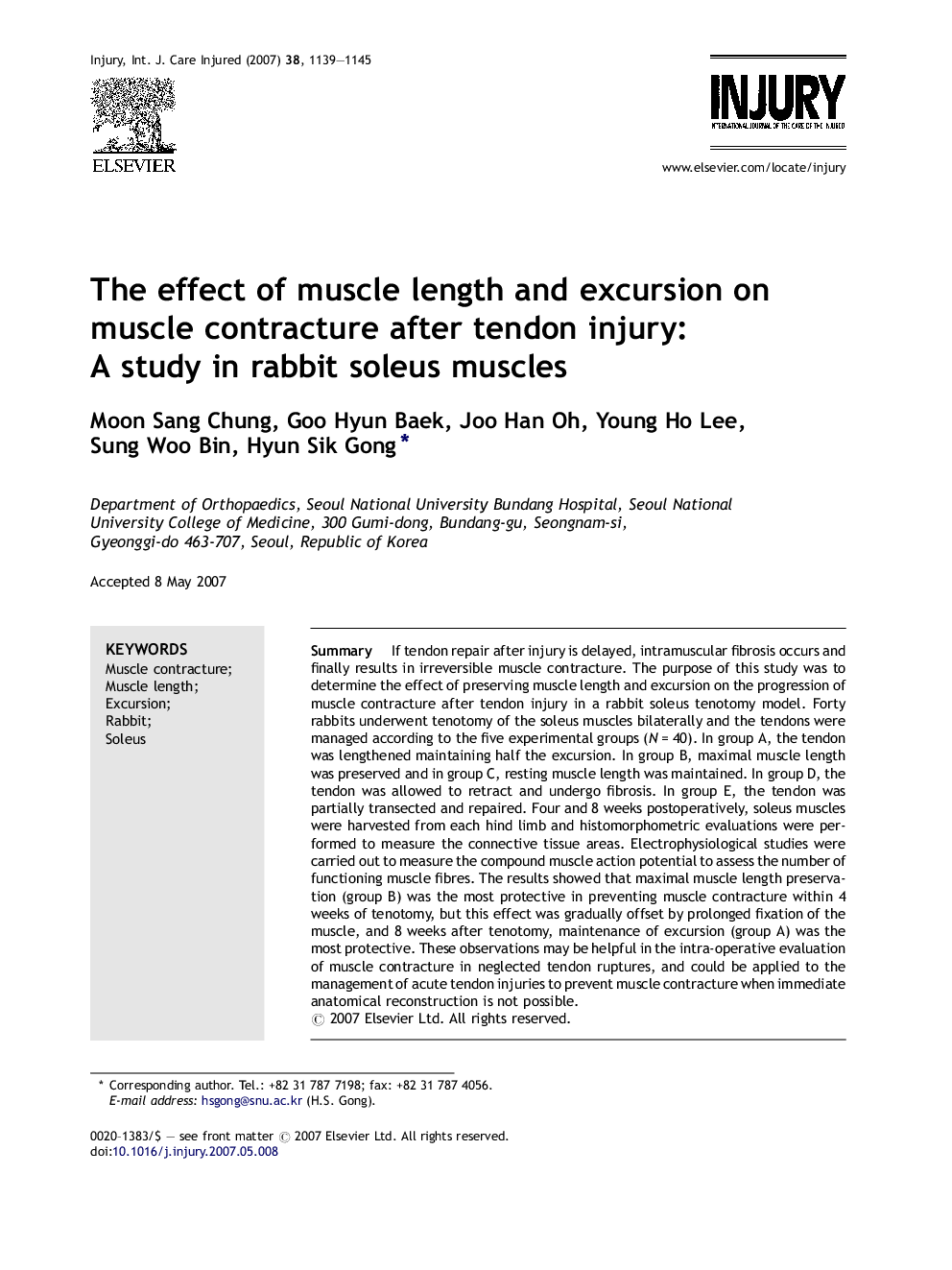| Article ID | Journal | Published Year | Pages | File Type |
|---|---|---|---|---|
| 3243031 | Injury | 2007 | 7 Pages |
SummaryIf tendon repair after injury is delayed, intramuscular fibrosis occurs and finally results in irreversible muscle contracture. The purpose of this study was to determine the effect of preserving muscle length and excursion on the progression of muscle contracture after tendon injury in a rabbit soleus tenotomy model. Forty rabbits underwent tenotomy of the soleus muscles bilaterally and the tendons were managed according to the five experimental groups (N = 40). In group A, the tendon was lengthened maintaining half the excursion. In group B, maximal muscle length was preserved and in group C, resting muscle length was maintained. In group D, the tendon was allowed to retract and undergo fibrosis. In group E, the tendon was partially transected and repaired. Four and 8 weeks postoperatively, soleus muscles were harvested from each hind limb and histomorphometric evaluations were performed to measure the connective tissue areas. Electrophysiological studies were carried out to measure the compound muscle action potential to assess the number of functioning muscle fibres. The results showed that maximal muscle length preservation (group B) was the most protective in preventing muscle contracture within 4 weeks of tenotomy, but this effect was gradually offset by prolonged fixation of the muscle, and 8 weeks after tenotomy, maintenance of excursion (group A) was the most protective. These observations may be helpful in the intra-operative evaluation of muscle contracture in neglected tendon ruptures, and could be applied to the management of acute tendon injuries to prevent muscle contracture when immediate anatomical reconstruction is not possible.
